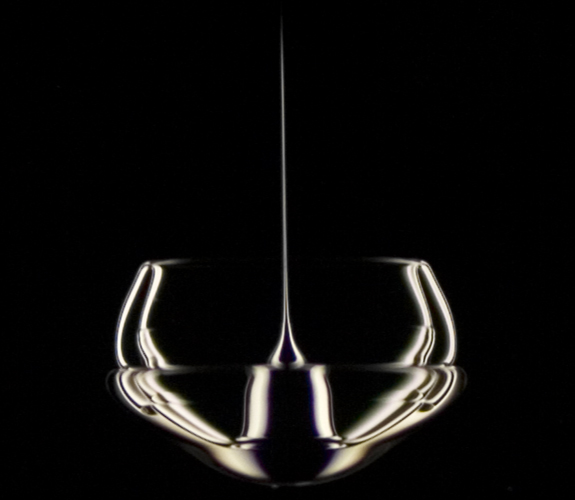Miscible Oil Droplets in Alcohol
Roderick R. La Foy, Jesse Belden, Anna M. Shih, Tadd T. Truscott, Alexandra H. Techet
Massachusetts Institute of Technology
In these experiments a droplet of oil approximately 3 millimeters in diameter is released from ~100 mm into a container filled with isopropyl alcohol. Images are captured with an SLR camera by projecting light onto the oil from both the left and right sides. The difference in index of refraction between the oil and alcohol cause the edges of the oil droplet to appear bright. The oil is soluble in and denser than isopropyl alcohol, which results in the drop naturally falling through the alcohol and eventually fully dissolving.

The drop of oil impacts the alcohol surface with an initial velocity, and inertial, viscous and diffusive forces combine to form the droplet into an upside-down “wine glass” shape (first image).

As the oil descends, the droplet expands radially forming a concave shape, causing the droplet to become thinner (second image). The denser core continues to descend, vertically elongating the droplet. This forms the droplet into a thinning hyperboloid sheet, which ultimately fragments due to an instability (not shown) [1].
References
[1] S. Residori, P. K. Buah-Bassuah, and F. T. Arecchi. 2007 Fragmentation instabilities of a drop as it falls in a miscible fluid, Eur. Phys. J. Special Topics, v. 146, pp. 357-374.
Reporters and Editors
These images have not been published, but may be used freely. Credit: R. R. La Foy, J. Belden, A. M. Shih, T. T. Truscott, & A. H. Techet.
